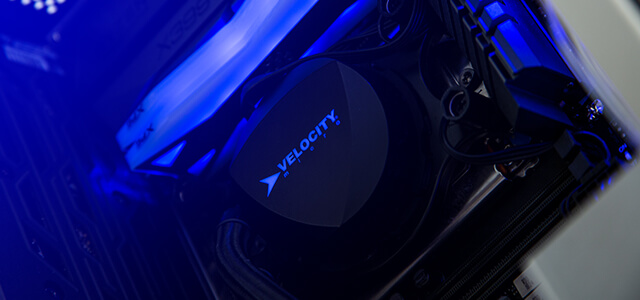
Shopping for a new workstation computer? Click here to configure and price one of our award-winning systems.
A workstation computer is a PC designed to accomplish professional tasks. Unlike standard computers, workstations typically have specialized components that are optimized to handle heavy computational or graphical tasks such as professional rendering, video editing, VFX, or scientific calculations.
Uses for Workstation computers
Workstation computers tend to be built for very specific purposes, and their internal components will reflect that. Workflows like design, rendering, or content creation using software like AutoCAD, Lumion, Adobe Premiere, or Revit usually benefit from a true workstation vs. a home desktop.
Unlike standard desktop computers, workstations typically support ECC (error correcting) RAM, have advanced storage capabilities like NAS drives, utilize professional grade graphics like Quadro and Radeon Pro, feature pro-grade motherboards, and have the cooling capacity to manage the thermals of these types of components.
The product support and warranties are also much more robust, which is a major factor in driving up the cost of these components. As a tradeoff, these industrial grade parts can and do typically last longer.
The major CPU, and GPU manufacturers offer product lines specifically tailors to workstation tasks.
Workstation CPU Lines
Intel: Xeon & X series – Intel’s multi-core solutions max out around 38 total cores for a single socket but can approach triple digits in total cores for a dual CPU configuration. Learn more about the difference between Xeon and i7 here.
AMD: Threadripper/Threadripper PRO – With 64 total cores on a single socket, AMD Threadripper is the most robust workstation solution for CPU intensive workloads.
Workstation GPU Lines
Nvidia: Quadro – NVIDIA’s pro level solution owns the majority of the market share, with professional graphics powered by up to 48GB of vRAM each. Our recommendation for the most high end tasks
AMD: Radeon Pro – AMD Pro product line offers some key advantages as well, especially when paired with an AMD processor.
Workstation Computer Types
Graphical Production: These computers are designed to produce 2D/3D images and animations and render out these creations for presentation. The GPU does the heavy lifting during the rendering process, but CPU speed/core count shouldn’t be ignored as the will shoulder some of the load as well.
Servers: Multi-core CPU based systems, designed in many cases to run indefinitely and handle complex computational tasks, manage many users, store large amounts of data, or render.
Multimedia: The CPU and GPU typically work together in multimedia or production systems to encode, edit, and produce professional audio/video. The more complex the media (more layers, effects, etc), the more hardware intensive.
Modeling: Modeling software like AutoCAD requires professional graphic cards to produce accurate professional models. This is typically CPU based with an emphasis on single threaded performance.
For more information, visit our Workstation PC page or contact our sales team at 804-419-0900.
Charlie O'Donnell
Latest posts by Charlie O'Donnell (see all)
- How to Clean Dust From Your PC - June 14, 2022
- How to troubleshoot your broken PSU - June 7, 2022
- What is a Workstation Computer? - June 17, 2021